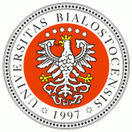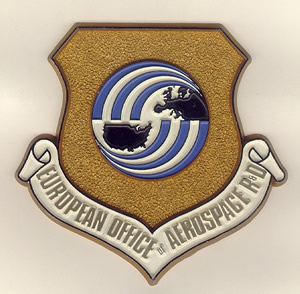Sponsors:



 |
|
Organized by
the Institute of Experimental Physics, University of Bialystok
Richard A. Brand, Germany
First lecture: Introduction to Mössbauer Spectroscopy & Applications
Second lecture: Introduction to Nuclear Resonant Scattering of Synchrotron Radiation & Applications
Richard A. Brand
Department of Physics
University of Duisburg-Essen
47048 Duisburg Germany
-
Introduction to Mössbauer Spectroscopy & Applications
The basics of recoil-free resonant absorption of gamma radiation are presented. Hyperfine interactions are introduced and it is shown how these can be exploited to gain structural, magnetic and dynamical information on the Mössbauer isotope in condensed matter. Applications include phase analysis, magnetic phase transitions and lattice dynamics as well as diffusion and disordered materials.
1. The physical basis of recoil-free nuclear resonance absorption.
1.1 Historical Introduction.
1.2 Hyperfine structure and resulting Mössbauer spectrum:
The spectrum, line positions, line forms and intensities.
1.3 Lattice dynamics and atomic motion.
2. Applications of Mössbauer spectroscopy to physical science.
2.1 Phase analysis and examples. Importance of sample preparation & Transmission Integral Method.
2.2 Electronic properties of alloys.
2.3 Magnetic phases: examples of disordered magnetism, spin glasses, magnetic glasses, etc.
2.4 Lattice dynamics and Lamb-Mössbauer factor.
2.5 Atomic cage motion & diffusion.
- Introduction to Nuclear Resonant Scattering of Synchrotron Radiation & Applications
In the last few years, the application of high resolution techniques to problems of scattering of synchrotron radiation has grown dramatically. One such application is that of nuclear resonant scattering. The basics of synchrotron radiation with respect to this application will be presented. Examples of both coherent elastic and incoherent inelastic scattering will be shown. In both cases, completely new experimental possibilities are provided, allowing access to physical properties which were previously difficult to measure. Emphasis will be laid on the lattice dynamical studies using incoherent inelastic scattering.
1. The physical basis of nuclear resonant scattering of synchrotron radiation.
1.1 Historical introduction: the first spectrum!
1.2 Time structure of synchrotron radiation and its uses for nuclear resonant processes.
1.3 Fundamentals of coherent elastic nuclear resonant scattering.
1.4 Fundamentals of incoherent inelastic nuclear resonant scattering.
2. Applications of nuclear resonant scattering of synchrotron radiation.
2.1 Applications to thin films and microsystems.
2.2 Applications to diffusion in solids.
2.3 Applications to vibrational density of states in solids.
|
|
|